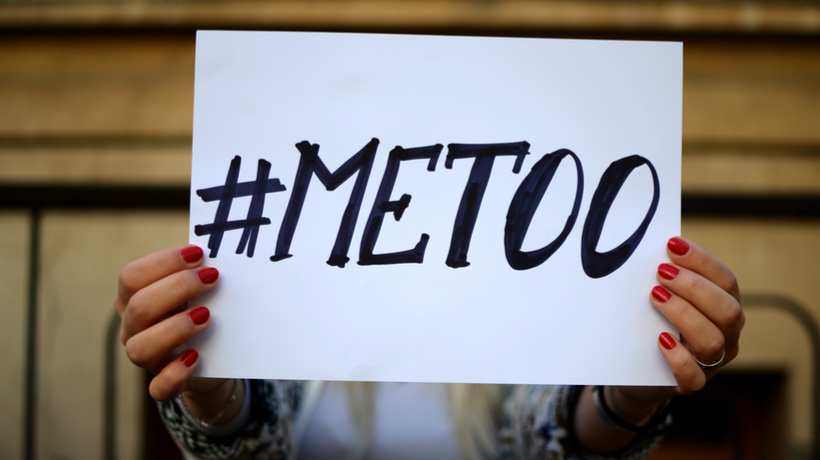New revelations of women’s #Me Too experiences are coming out every day, circulating conversations within the media and in our social circles. Even if another woman’s specific experience didn’t happen to you, it may have an impact on you just by reading, thinking or talking about it.
If you’ve had your own #MeToo experience – which is a strong probability given that the vast majority of women have – you might feel ‘retriggered’ even if your experiences were pushed toward the back of your mind. You might reexperience feelings and the memories you’ve had. You might reactivate the ways you’ve been impacted.
How would you know if you are being retriggered?
‘Flooded’ – You have intense emotions such as feeling anger toward someone who hurt you. You might feel these feelings somewhere in your body (such as a pit in your stomach, tension in your shoulders) or ‘in your head’ (nonstop thinking about your feelings)
‘Obsessed’ or ‘ruminating’ – You can’t stop thinking about it or you can’t stop seeking information on social media or in conversation
You have memories coming up “unbidden” even if you aren’t trying to retrieve them.
You are reliving aspects of an earlier experience in your life.
You feel down or depressed and want to isolate or avoid people.
You might also have a similar experience even if you haven’t experienced the same kinds of abuse or trauma you are reading about. We call this “vicarious traumatization.” By empathizing with what others have gone through and feeling the reverberation of their emotions, you too may be retriggered and feel as if the world is out of control.
Trauma occurs when a person is not able to take control of their own physical and mental well-being because they are overwhelmed by another’s needs. At its core, the experience is one of feeling ‘disempowered.’
If you are experiencing ‘vicarious trauma’, here are five things you can do to take back control:
Take a break and increase your self-care
Disengage for a period of time, whether that’s hours or days or weeks. Stay away from social media, or conversations with people who are constantly talking about the news.
Find calm in your body. Sit in your favorite chair with your favorite drink. Walk in nature. Take a warm shower or a bath with candles. Read something that’s not the news. Write in your journal. Enjoy time with loved ones. Do something with your hands like cooking, gardening or drawing. Exercise vigorously. How will you practice self-care today?
Decide on your participation
You can choose how to participate in the ongoing conversation. You can show your support for others’ stories without getting too deeply involved (try to simply ‘like’ a post) or without sharing too much of your own story or feelings. Or you can use the ongoing conversation to share your perspectives and/or advice in comments online, at a rally or in your journal. You can choose whether you want to speak up and decide what you say or don’t say. It’s your choice.
Share your feelings with someone you trust
Ask a trusted friend/good listener if you can share what you are feeling with them. It’s powerful when you feel ‘seen’ and ‘heard’ by someone you respect. Use this as an opportunity to put together what you’re feeling (and why you’re feeling this way). Putting words to your feelings helps you make sense of them in a contained way, so when you are done you can live the rest of your day making the contribution you are here to make.
Move your feelings through your body
Women are built to process emotion and stress. If you don’t feel your feelings and move them through your body, they will become ‘stuck’. This may manifest as unease in your body or lead you to act inadvertently due to your feelings (e.g. snapping at your child when you are actually angry about other things).
Usually, we fear that if we feel, we will never stop feeling–but intense emotions only last 90 seconds. You often have more peace and perspective afterwards.
In her game-changing bestselling book, Regena Thomashauer teaches women to ‘play all 88 keys on their piano’, allowing yourself to feel your full range of emotions and move through them–an idea she calls “swamping.” Put on a song that describes your mood and let your body move to it. Sing and dance. Do it with other women too! If you are angry try to shadow box (or go to a gym and try actual boxing). If you feel sad, curl up in a ball on a chair and cry it through your body.
My favorite forms of inspiration and tools for doing this are emotion movement classes and Naam yoga.
Pursue a survivor mission
It’s empowering to turn your suffering into a sense of purpose to help others. There are many ways of getting involved – you can volunteer to support people who have experienced abuse by working at a shelter, being a big sister or foster parent or starting an organization to help those in your area. Work to change laws in your town, help to remove officials that aren’t accountable and elect officials that will protect others from harm. You might even run for local office yourself!
If all this talk about past or recent abuse is making you think about confronting the person who violated you, consider this:
If you believe it will help you feel empowered to speak YOUR truth, then do so. Make the interaction about what YOU want to say to that person, and not about what you are hoping to get from them. You are ready to do it only when you are able to accept any possible response you might get. Why?
The person might be prepared to acknowledge their wrongs and apologize. If they do, it could be very healing for you to feel seen.
But that person (or other people who protected them) may not have evolved and could still have the same inability to see your needs. Their behavior may still be motivated to protect themselves, and they may not be able to acknowledge you.
The most powerful thing you can do to dismantle the patriarchal values that allow violence to happen is to believe in the truth of who you are – that you are beautiful, good, talented and capable of feeling joy … and that nothing that anyone ever did to you can change that.



